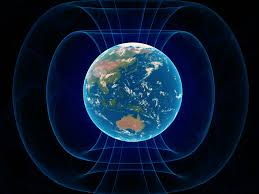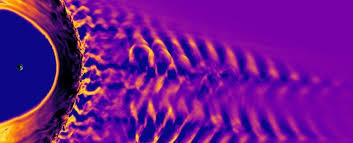
Earth’s magnetic field could be charging much faster than we ever realised
The Earth’s magnetic field flips, every few hundred thousand years or so on average, which means magnetic north becomes magnetic south and vice versa (the planet doesn’t actually turn upside down). New research suggests this change of direction can happen up to 10 times faster than previously thought.
That’s big news for scientists studying how the magnetic field shifts affect life on Earth, how our planet has evolved over time, and how we might be better able to predict the next reversal in the coming years.

Past palaeomagnetic studies have shown that the magnetic field could change direction at up to 1 degree a year, but the latest study suggests that movements of up to 10 degrees annually are possible.
That’s based on detailed computer simulations of the outer core made of nickel and iron some 2,800 kilometres (1,740 miles) below Earth’s surface, which controls our magnetic field.
“We have very incomplete knowledge of our magnetic field prior to 400 years ago,” says geophysicist Chris Davies from the University of Leeds in the UK.
“Since these rapid changes represent some of the more extreme behaviour of the liquid core, they could give important information about the behaviour of Earth’s deep interior.”
Davies and his colleague Catherine Constable from the University of California San Diego combined their computer modelling with a recently published timeline of Earth’s magnetic field over the past 100,000 years, and found a close match between the other study and their own predictions.
Changes in our planet’s magnetic field leave traces in sediment, lava flows, and even human-made objects, though some educated guesswork is still required when it comes to working out how it’s shifting and over what period of time.
Quicker changes in direction seem to coincide with a local weakening of the magnetic field, the new research found. One shift in particular was highlighted: a movement of 2.5 degrees per year 39,000 years ago, right after the most recent Laschamp excursion flip, when the Earth’s magnetic field was weakened around the west coast of Central America.
“Understanding whether computer simulations of the magnetic field accurately reflect the physical behaviour of the geomagnetic field as inferred from geological records can be very challenging,” says Constable.
“But in this case we have been able to show excellent agreement in both the rates of change and general location of the most extreme events across a range of computer simulations.”
Earth’s magnetic field not only helps us get from A to B with a compass (or a smartphone), it also keeps us protected from the weathering effects of space and solar radiation. You might not realise it, but the magnetic poles are always wandering about.
Knowing more about how these shifts and flips are happening – and at what speed – is going to be vital for everything from reconfiguring satellites to dealing with the changes in radiation exposure that might result from a reversal of the field.
We’re learning all the time though: about how frequent these reversals are, and now, how fast they are too. The researchers hope that further simulations might give us clues about where best to look in terms of making field recordings on the state of the magnetic field over time.
“Further study of the evolving dynamics in these simulations offers a useful strategy for documenting how such rapid changes occur and whether they are also found during times of stable magnetic polarity like what we are experiencing today,” says Constable.
